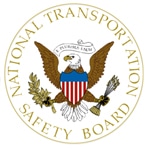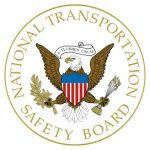
A backhoe operator and a track supervisor were killed, and 39 people were injured when Amtrak train 89, traveling on the Northeast Corridor from Philadelphia to Washington on track three, struck a backhoe at about 7:50 a.m. The train engineer saw equipment and people working on and near track three and initiated emergency braking that slowed the train from 106 mph to approximately 99 mph at the time of impact.
The NTSB also determined allowing a passenger train to travel at maximum authorized speed on unprotected track where workers were present, the absence of shunting devices, the foreman’s failure to conduct a job briefing at the start of the shift, all coupled with the numerous inconsistent views of safety and safety management throughout Amtrak, led to the accident.
“Amtrak’s safety culture is failing, and is primed to fail again, until and unless Amtrak changes the way it practices safety management,” said NTSB Chairman Robert L. Sumwalt. “Investigators found a labor-management relationship so adversarial that safety programs became contentious at the bargaining table, with the unions ultimately refusing to participate.”
The NTSB also noted the Federal Railroad Administration’s failure to require redundant signal protection, such as shunting, for maintenance-of-way work crews contributed to this accident.
Post-accident toxicology determined that the backhoe operator tested positive for cocaine, and the track supervisor had tested positive for codeine and morphine. The locomotive engineer tested positive for marijuana. The NTSB determined that while drug use was not a factor in this accident, it was symptomatic of a weak safety culture at Amtrak.
As a result of this investigation, the NTSB issued 14 safety recommendations including nine to Amtrak.
The NTSB also made two safety recommendations to the Federal Railroad Administration, and three safety recommendations were issued to the Brotherhood of Maintenance of Way Employees Division, American Railway and Airway Supervisors Association, Brotherhood of Locomotive Engineers and Trainmen and Brotherhood of Railroad Signalmen.
The abstract of the NTSB’s final report, that includes the findings, probable cause and safety recommendations is available online here. The final report will be publicly released in the next several days.
The webcast of the board meeting for this investigation is available for 90 days here.
Tag: NTSB
The National Transportation and Safety Board (NTSB) announced Oct. 12 that it ruled that a collision between a pair of Union Pacific trains in Texarkana, Texas, in September 2015 was probably caused by crewmembers who did not respond to wayside signal indicators because they had fallen asleep.
The board also said that the lack of a functioning positive train control was a contributing factor in the collision.
At 12:34 a.m. Sept. 8, 2015, when a westbound UP engine on the Pine Bluff Subdivision struck a northbound UP train that was traveling on the Little Rock Subdivision, the board said.
Data from the locomotive event recorder of the striking train showed that the train slowed from 19 to 6 mph after the engineer applied the emergency brakes, the board said.
The engineer and conductor of the westbound train were treated for minor injuries, and there were no injuries to the crew of the northbound train, the board said.
Both of the westbound train’s locomotives derailed, spilling 4,000 of diesel fuel, while seven cars of the train that was struck left the tracks, the board said.
The NTSB said damage to the trains was estimated at $4.66 million.
The board also announced Oct. 17 that it was to convene Nov. 14 to determine probable cause of a collision that happened April 3, 2016, between an Amtrak train and a backhoe that killed a pair of rail workers who were repairing track ballast in Chester, Pa.
A total of 41 passengers were taken to the hospital after the collision, the board’s preliminary report said.
Union Pacific switchman, Jon Beckman, 48, was killed when he was struck by a train Friday, Sept. 22. He was working in Arlington, Texas when the accident occurred.
Beckman was a member of Local 243 in Ft. Worth, Texas, for 19 years. He served the local as president since 2007 and local chairperson since 2012, and was also the local’s delegate.
The SMART TD National Safety Team has been dispatched to the scene and is helping the NTSB with the investigation.
SMART TD extends its deepest condolences to the Beckman family and to all who knew him.
Forty-two people, including the train engineer, were injured when their SEPTA train crashed into an empty, stopped train inside the 69th Street Transportation Center in Upper Darby, Pa., shortly after midnight, Tuesday, Aug. 22.
In a statement, SEPTA said that none of the injuries appeared to be life threatening. The train was carrying 41 passengers and the train operator when the crash occurred.
The National Transportation Safety Board (NTSB) has dispatched personnel to the scene to investigate the cause of the accident.
Read more from Philly.com.

Safety Alert 066 was prompted in part by the deaths of two rail workers who were struck and killed by a train in Edgemont, South Dakota, Jan. 17, 2017. The NTSB investigation found the sight distance used by the watchman/lookout was about half the distance required by federal regulations. The Federal Railroad Administration (FRA) requires that workers be able to clear the tracks at least 15 seconds before a train moving at the maximum authorized speed can pass the work location safely.
“The accident cited in this safety alert, and other recent similar accidents, warrant a reminder to railroad employees to remain vigilant for approaching trains – whether they are the watchman/lookout or whether they are working on the tracks,” said NTSB Acting Chairman Robert L. Sumwalt. “If a watchman/lookout does not devote his or her full attention to their duty of looking for approaching trains, they might not provide warning of an approaching train with sufficient time for their coworkers to clear the tracks. This alert highlights actions that when followed, will save lives railroad worker lives.’’
Railroad worker safety was previously addressed by the NTSB in its Special Investigation Report on Railroad and Rail Transit Roadway Worker Protection.
Click here to read Safety Alert 066: Watchman/Lookout: Your coworkers depend on you.
Two employees of CSX Transportation were struck and killed, Tuesday, June 27, as an Amtrak train approached Union Station in Washington, D.C.
The victims were aboard a CSX freight train approaching the station when an alert instructed the crew to stop and check part of the train, a National Transportation Safety Board (NTSB) official said. The two CSX employees were then struck by the Amtrak train after getting off of their freight train. Of the 121 passengers aboard Amtrak Train 175, no one was hurt.
The identities of the two victims has not yet been released out of respect for the families. The NTSB is still investigating the cause of the accident.
Read more from NBC 4 Washington.
According to 6abc.com, a SEPTA commuter train collision in Upper Darby, Penn. resulted in four injuries, including the train engineer, who was reported to be in critical condition. Names of the injured have not been released; NTSB investigators are on site. Read the complete story here.
CNN reports that a tour bus operated by USA Holiday slammed into the back of a tractor trailer, killing 13 and injuring 31 more. The bus was returning to Los Angeles from a casino Sunday when the crash occurred at approximately 5:15 a.m. The bus operator was killed and the truck driver was injured. The National Transportation Safety Board (NTSB) is expected to arrive at the scene of the crash Monday morning to investigate.
Click here to read more from CNN.
In light of the deadly NJT September 29th transit crash in Hoboken, NJ, that killed one person and injured more than 100, U.S. Senator Cory Booker, the top-ranking Democrat on the U.S. Senate subcommittee that oversees passenger rail safety, and U.S. Senator Bob Menendez, the top-ranking Democrat on the U.S. Senate mass transit subcommittee, submitted a letter to U.S. Department of Transportation (DOT) Secretary Anthony Foxx , calling for DOT to investigate the long list of safety violations, accidents and apparent systemic failures that have plagued the NJT in recent years. The NTSB is currently investigation the crash. Read the complete article posted in NJ.com, here.
Separate rules increase protections, add Maintenance of Way workers to drug and alcohol testing policy

“Clear communication, multiple layers of safety and a rigorous alcohol and drug testing policy are critical to keep workers along and near tracks—and ultimately passengers and train crews—out of harm’s way,” said U.S. Transportation Secretary Anthony Foxx. “These are common sense rules that will help make our railroads safer.”
The Roadway Worker Protection final rule amendments will: (1) resolve different interpretations that have emerged since the rule went into effect nearly 20 years ago; (2) implement FRA’s Railroad Safety Advisory Committee’s (RSAC) consensus recommendations; (3) codify certain FRA Technical Bulletins; (4) codify a FAST Act mandate by adopting new requirements governing redundant signal protections; (5) address the safe movement of roadway maintenance machinery over signalized non-controlled track (not under a dispatcher’s control); and (6) amend certain qualification requirements for roadway workers.
The latest amendments require that job briefings include information for roadway worker groups on the accessibility of the roadway worker in charge; set standards for how “occupancy behind” train authorities (when the authority for a work crew does not begin until the train has passed the area) can be used; and require annual training for any individual serving as a roadway worker in charge.
In addition to the existing requirement to have a primary means of protection by establishing working limits and a requirement that all affected roadway workers be notified before working limits are released, FRA’s rule changes will now require another level of redundant signal protection.
“These new rules add another layer of protection for workers who work along and near railroad tracks and will help us reduce preventable worker injuries and fatalities,” said FRA Administrator Sarah E. Feinberg.
In response to both a congressional mandate and a National Transportation Safety Board (NTSB) recommendation, FRA is broadening the scope of its existing drug and alcohol testing regulation to cover MOW employees. Currently, a MOW employee is only drug and alcohol tested when he or she has died as a result of an accident or incident. MOW employees will now be fully subject to FRA’s drug and alcohol testing that includes random testing, post-accident testing, reasonable suspicion testing, reasonable cause testing, pre-employment testing, return-to-duty testing and follow-up testing.
“Whether you are an engineer, conductor or someone working alongside the tracks, safety requires alertness. Any reduction in awareness caused by drugs or alcohol use can often be the difference between life and death,” Feinberg added.
The Control of Alcohol and Drug Use rule, which also clarifies interpretations since the testing rule went into effect in 1986, includes other substantive changes. In response to another NTSB recommendation, the rule changes will now allow drug testing of railroad and MOW employees that are believed to have caused an incident at a railroad crossing.
The final Roadway Worker Protection rule is effective April 1, 2017. The Control of Alcohol and Drug Use goes into effect one year after publication.
Read the rules: